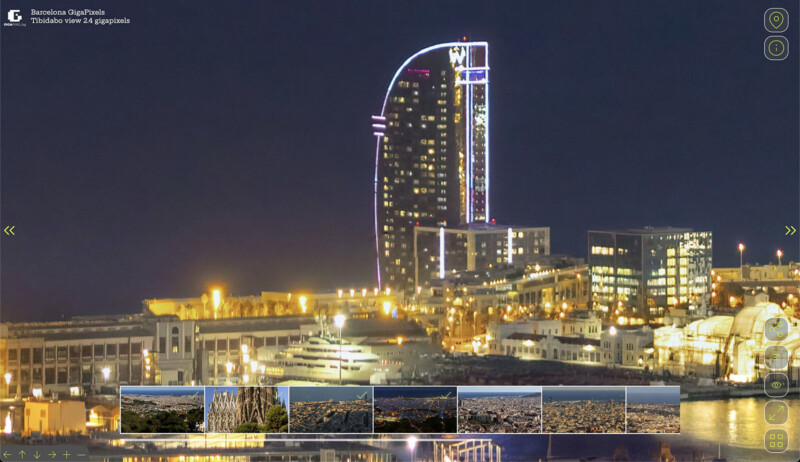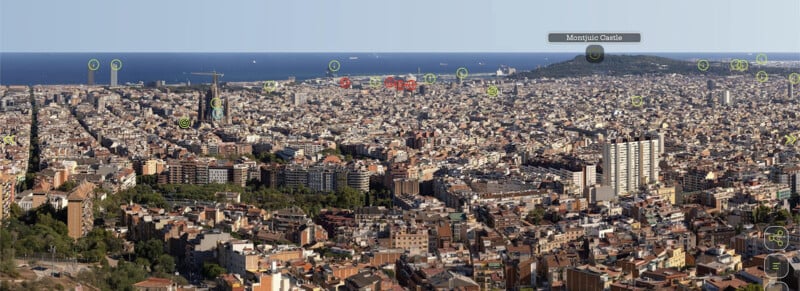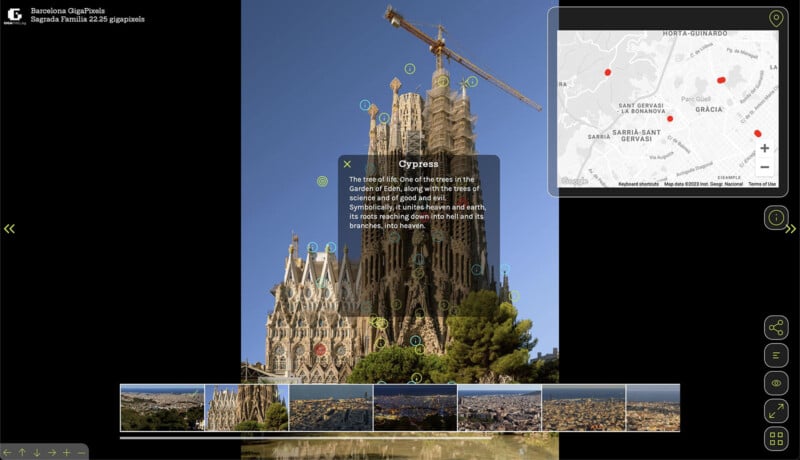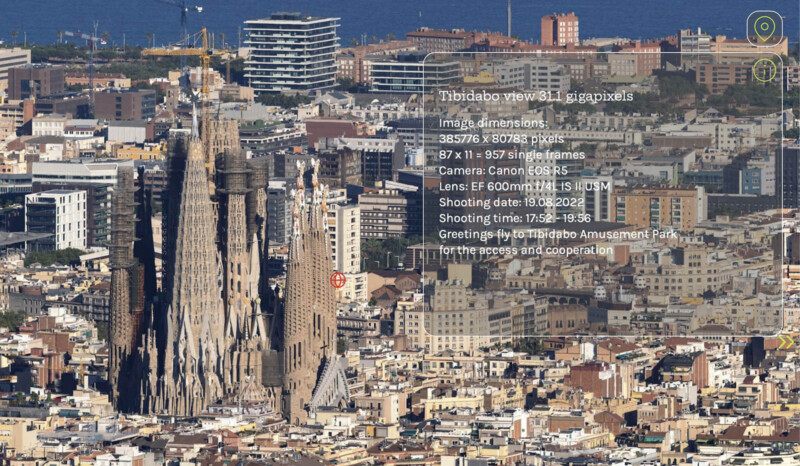Photographers Made an Incredible 114-Gigapixel Tour of Barcelona
![]()
George Palov and Michael von Aichberger collaborated to create an impressive 114-gigapixel virtual tour of Barcelona, Spain, complete with tagged landmarks, camera information, and controls for exploration.
Palov is an architect and panoramic photographer from Bulgaria, so it’s easy to see why he would be drawn to a project like this in beautiful city of Barcelona. Aichberger is a photo engineer and photographer from Germany. The two first met in Sofia, Bulgaria, Palov’s home in 2021 to shoot the largest image ever taken in Bulgaria.
![]()
![]()
The photographers wanted to take on another project together, settling on Barcelona for their latest gigapixel creation. Palov tells DIY Photography that the photographers selected Barcelona because of its exciting cityscape and the hills surrounding the city.
“We spent about seven days in Barcelona, and on three of them, the weather was good enough for gigapixel photography. We made the most of it.” Palov says.
![]()
During the three days of shooting, Palov and Aichberger captured enough images to create eight massive panoramas from four locations. The subsequent three months of stitching and processing resulted in 114 gigapixels of combined data.
![]()
The project was personal for the two enthusiast photographers, so they used their own equipment, including a Swiss-made panoramic robot and the 45-megapixel Canon EOS R5 mirrorless camera. For many images, they used an adapted Canon EF 600mm f/4 L IS II telephoto lens, occasionally with a 2x teleconverter. For the panorama of the Sagrada Familia cathederal, they used a Canon EF 200mm f/2.8 L USM II lens.
![]()
Beyond the challenges of capturing the source images, gigapixel processing includes its own hurdles. The photos are extremely large — too large for different photo editing applications like Adobe Photoshop. Each of the eight panoramas is more than 70 gigabytes.
![]()

The image processing also includes basic retouching and, in some cases, focus stacking more than 100 files because the shallow depth of field of the 600mm f/4 lens results in some buildings in the foreground and background being too blurry.
![]()
Common issues the pair encounter when making gigapixel panoramas is lens vignetting and heat haze. “For vignetting and light equalization, we use our own tools. None of the available commercial tools can handle this very well so it doesn’t look bad (create stripes) in the final output,” Palov tells DIY Photography.
![]()
Unfortunately, there’s no suitable tool to ovecome image quality issues due to heat haze, so a planned shoot at Tibidabo, a hill overlooking Barcelona, had to be scrapped due to weather and time limitations.

Following the extensive processing workflow, Palov and Aichberger added tags of famous places in Barcelona to their panoramas, making it useful for locals and tourists alike to find landmarks in the city. They also included information specific to the famous Sagrada Familia cathedral, among the most famous churches in the world.

With photographers in mind, the pair included technical specifications that can be viewed by clicking an “Info” button. Information includes shutter speed, image size, and how long Palov and Aichberger shot at that location.

Whether a photographer lives in Spain, hopes to visit Barcelona, or enjoys huge panoramas, they should investigate and explore Palov and Aichberger’s incredible gigapixel panoramas. There’s so much to see, and it’s much easier to appreciate the work that went into the project by viewing it on Gigapixel.bg.
“For one gigapixel panorama, we had to shoot hundreds, sometimes thousands of images, which were then stitched into the very big panoramas,” George explains. “It was an immense effort for us to finalize the project, but we think it turned out great!”
Image credits: George Palov and Michael von Aichberger